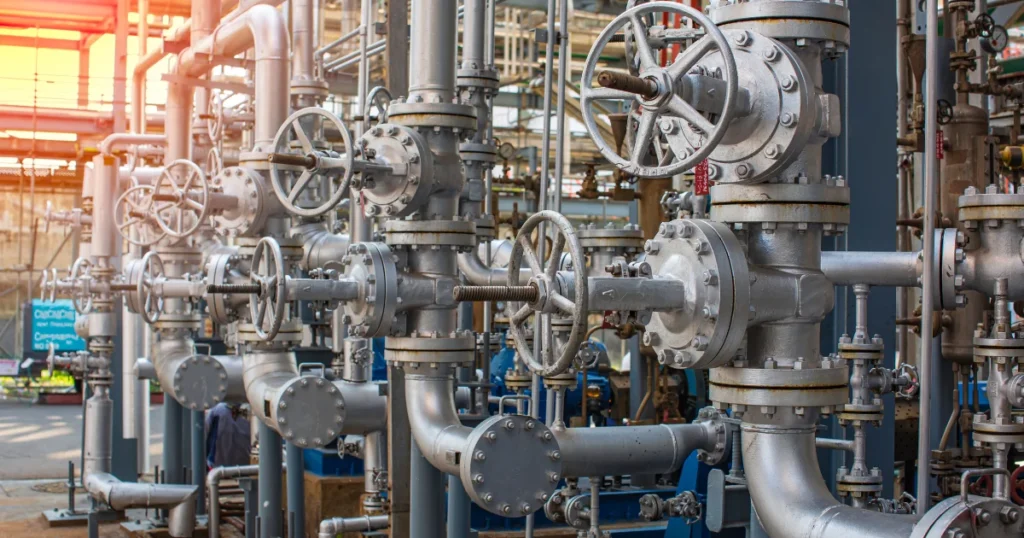Butterfly valves have become a pivotal component in achieving effective noise control in various industrial applications. The right butterfly valve can mitigate noise generated by turbulent flow, which in turn reduces vibrations and acoustic pressures within the system. Precisely designed for flow control, manual butterfly valves can be optimized for specific acoustic performance without sacrificing efficiency and durability.
Selecting the appropriate butterfly valve, such as those with specialized seating materials and manual operation capabilities, is critical in environments where noise reduction is as important as regulating the flow.
Applying acoustic insulation strategies in conjunction with these valves further enhances noise reduction efforts. It’s essential to engineer these solutions with a knowledge of the mechanical properties and installation environments of butterfly valves to ensure a successful noise control strategy.
Butterfly Valve Usage in Noise Control
Butterfly valves can be effectively incorporated into noise reduction strategies within industrial systems. Understanding the sources of noise and implementing appropriate selection and design techniques are crucial in achieving noise control.
Understanding Noise Sources and Paths
Noise in valve systems primarily stems from aerodynamic noise and turbulent pressure drops. It originates from the valve itself and propagates through the piping system, becoming a challenge in maintaining an acceptable sound pressure level. Identifying these sources and understanding the noise paths is essential for formulating an effective attenuation strategy. Noise can emanate from high-velocity fluid jets, turbulent shear layers, and pressure drop staging that occurs in the throttle region of a valve.
Selection and Sizing of Butterfly Valves
Proper valve selection and control valve sizing are pivotal to noise control. When sizing butterfly valves, ensure that they match the system demands to avoid excessive velocity peaks which can escalate noise issues. A correctly sized butterfly valve will minimize pressure drop, one of the key factors in noise generation. Select a butterfly valve based on its inherent ability to handle the expected range of flow conditions while still maintaining performance.
See Also: How Management Software is Reshaping Manufacturing
Innovative Noise Attenuation Techniques
For effective noise reduction, explore innovative noise attenuation techniques such as using valves with specially designed discs that can reduce turbulence. Implementing acoustic insulation in critical areas also helps dampen noise transmission. Employ source control methods like altering the geometry of the valve to influence fluid dynamics positively and path control approaches such as installing acoustic barriers or adding mass to the valve system to absorb vibrational energy.
Engineering and Design Considerations
To ensure the effective use of butterfly valves in noise reduction strategies, you need to focus on engineering practices and design specifics. This involves a proactive approach to cavitation management, selection of suitable materials and construction methods, and optimization of overall system performance for efficient operation.
Preventing and Managing Cavitation
Cavitation occurs when a fluid’s vapor pressure falls below its ambient pressure and creates vapor bubbles, which collapse and generate noise and potential damage. You can mitigate cavitation by incorporating an orifice plate downstream of the valve, which helps to stabilize the flow and reduce pressure fluctuations. Additionally, using properly sized globe valves with precision-designed internals can control the flow and minimize the onset of cavitation.
- Friction: Consider that surface finishes and the tightness of moving parts affect friction levels, influencing cavitation and its intensity.
- Temperature: Keep in mind the temperature of operation, as it impacts the vapor pressure and subsequently the cavitation potential.
Material and Construction Impact
The choice of materials and construction heavily influences the durability and noise-reduction capability of butterfly valves. Ensure that the materials can withstand expected heat levels without degrading. Choose acoustic insulation materials wisely to dampen noise effectively.
- Safety Factor: Calculate the safety factor according to the maximal expected pressure and the shock conditions to avoid cavitation damage.
- Precision: Opt for mechanical elements designed with high precision to ensure tight seals and smooth operation, which reduces operational noise.
Optimizing System Performance
Optimal system performance is achieved by careful loop-tuning parameters and ensuring that all components, including your butterfly valve, are contributing to a streamlined flow. Keep an eye on the flow coefficient to maintain a balance between control and efficiency. Regular monitoring and maintenance informed by both experimental results and simulation data are critical to sustain optimal performance.
- Heat Management: Actively manage heat in the system to maintain fluids above their vapor pressure, thereby preventing cavitation.
- System Calibration: Maintain and adjust your system based on reliable feedback to preserve expected levels of temperature and friction within the system.
Also Read: How to Improve the Manufacturing Process?
Key Takeaways
- Butterfly valves are integral for reducing industrial noise.
- Proper selection and insulation of valves enhance noise control.
- Engineering considerations are crucial for effective application.
Employing butterfly valves effectively can significantly mitigate noise and vibration issues in fluid systems. By integrating semicircular fins into the valve design or utilizing air injection methodologies, you heighten the functional efficiency of these systems.
Noise reduction is a matter of comfort and a crucial aspect of maintaining the integrity of industrial applications. Your understanding of these strategies can lead to optimized operational performance and reduced mechanical disturbances.
Harry O’Neill writes about all things tech, SaaS, and marketing at Solution Suggest. He’s known for turning complex ideas into clear, actionable insights. With experience working alongside top-tier companies worldwide, he helps brands connect with their audiences through content that drives real results.
